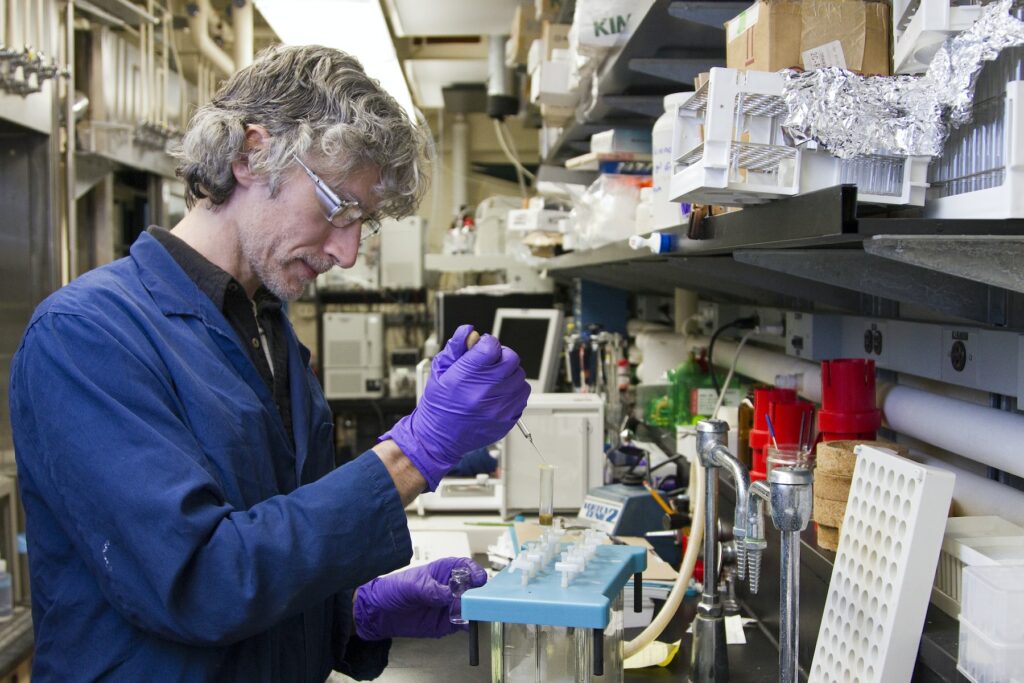![The ‘Giveaway Piggy Back Scam’ In Full Swing [2022]](https://www.cjco.com.au/wp-content/uploads/pexels-nataliya-vaitkevich-7172791-1-scaled-2-683x1024.jpg)

Revolutionizing Proteomics: Unraveling Complex 3D Protein Structures with Geometric Neural Networks and Protein Language Models

As Seen On
Understanding the intricacies of protein structures is a cornerstone of many biological processes. These complex 3D models govern an expansive range of cellular activities and are vital in the quest to decipher biological mechanisms. However, the current approaches in analyzing these protein structures leave scientists grappling with substantial challenges and limitations.
Traditionally, protein structures have been analyzed by painstakingly mapping amino acids sequences, a time-intensive process that can confront researchers with a raft of accuracy issues. More recently, the emergence of protein language models, utilizing machine learning techniques, has provided a glimmer of hope. Strong and robust, these language models excel in understanding 1D protein sequences, offering a granular view of the protein’s constituent parts.
However, while their ability to map out protein sequences accurately is unrivaled, where protein language models fall short is in their understanding of the final assembled 3D protein structures. The geometry of protein folding and assembly is instrumental in its subsequent function – a crucial aspect that these models have, hitherto, been unable to fully comprehend.
Could the answer to this issue lie in an innovative mix of geometric neural networks and protein language models?
By using protein language models, specifically the ESM-2 model, researchers are able to identify protein sequences effectively. This 1D sequence analysis offers unparalleled detail, allowing the amino acids sequences to be understood in-depth. Such models serve as a robust foundation, providing the all-important groundwork for understanding more complex 3D protein structures.
The ESM-2 model’s findings then feed into geometric neural networks, a groundbreaking way of understanding complex structures. By incorporating the detailed protein sequencing into these neural networks, the misunderstanding or confusion often encountered when examining 3D structures is mitigated. The neural network applies its advanced comprehension to the 3D models, ultimately leading to a richer, deeper knowledge of the entire protein structure.
This two-step breakthrough method holds exciting prospects for the field of proteomics and beyond. The improved understanding of complex 3D protein structures opens up vast new avenues for scientific research, offering potential catalysts for advancements in healthcare and disease understanding.
By expanding our knowledge of how proteins function, we will enhance our ability to manipulate cellular processes, offer insights into disease progression, and guide the development of targeted therapeutics. With these advancements no longer a distant goal, the implications on scientific research and healthcare could be profound.
This approach further illustrates the importance and impact of machine learning and artificial intelligence in biological computation. Like peptides fitting into a lock, the combination of geometric neural networks and protein language models can unlock a new dimension in our understanding of the protein structure.
Embracing this modern science approach will assist in removing the shackles that hinder our progress in understanding complex protein structures. As we stand on the precipice of this revolutionary approach, it’s beneficial to reflect on the future directions of machine learning applications in protein structural analysis and its potential effect on healthcare outcomes.
In a field as intricate and crucial as proteomics, the union of novel tools will not only accelerate our understanding but may well revolutionize it, bringing to light new horizons previously veiled in shadows of uncertainty and analytical limitations.
Casey Jones
Up until working with Casey, we had only had poor to mediocre experiences outsourcing work to agencies. Casey & the team at CJ&CO are the exception to the rule.
Communication was beyond great, his understanding of our vision was phenomenal, and instead of needing babysitting like the other agencies we worked with, he was not only completely dependable but also gave us sound suggestions on how to get better results, at the risk of us not needing him for the initial job we requested (absolute gem).
This has truly been the first time we worked with someone outside of our business that quickly grasped our vision, and that I could completely forget about and would still deliver above expectations.
I honestly can't wait to work in many more projects together!
Disclaimer
*The information this blog provides is for general informational purposes only and is not intended as financial or professional advice. The information may not reflect current developments and may be changed or updated without notice. Any opinions expressed on this blog are the author’s own and do not necessarily reflect the views of the author’s employer or any other organization. You should not act or rely on any information contained in this blog without first seeking the advice of a professional. No representation or warranty, express or implied, is made as to the accuracy or completeness of the information contained in this blog. The author and affiliated parties assume no liability for any errors or omissions.

